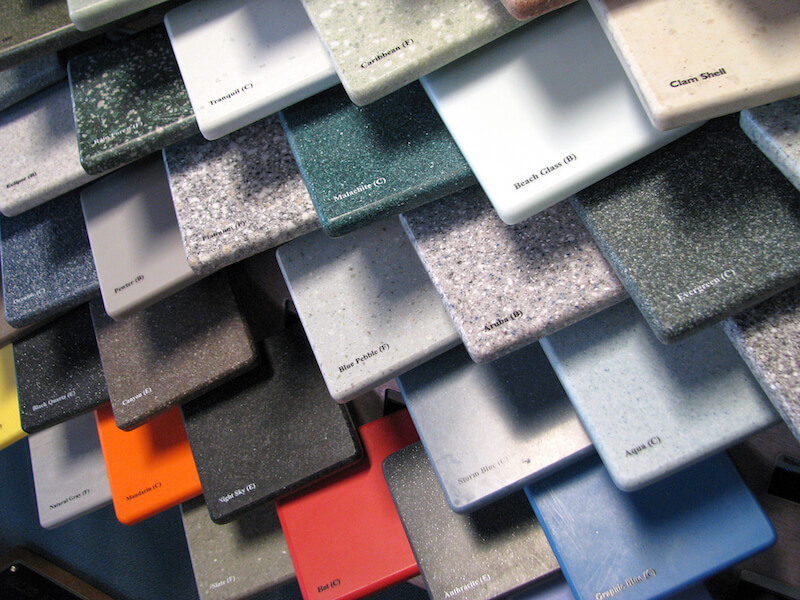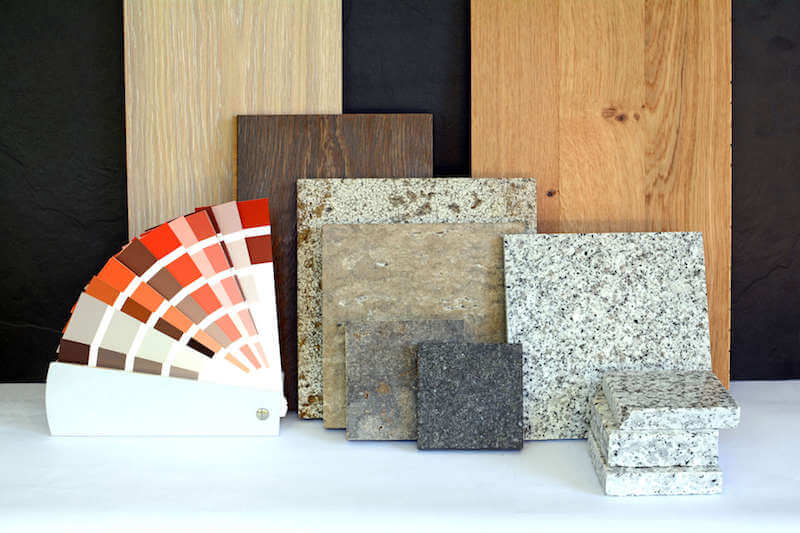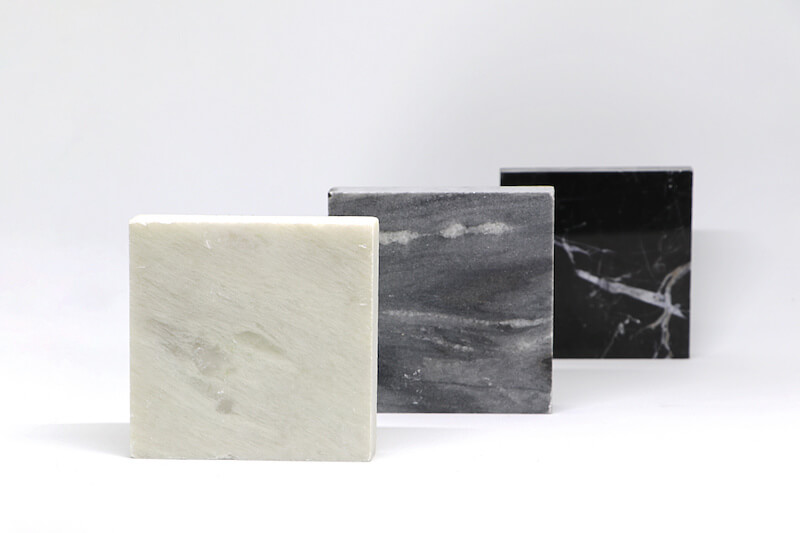- Vanities
- Shop By Size
- Shop By Type
- Single Sink Vanities
- Double Sink Vanities
- Vanities Without Tops
- Console Sinks
- Narrow Depth Vanities
- Small Double Vanities
- Farmhouse Vanities
- Vessel Sink Vanities
- Floating Vanities
- Offset Sink Vanities
- Modern Vanities
- Rustic Vanities
- James Martin Vanities
- L&K Vanities
- Silkroad Exclusive Vanities
- Lexora Home Vanities
- Shop By Finish
- Shop All Vanities
- ON SALE
- Linen Cabinets
- Sinks
- Plumbing
- Mirrors
- Lighting
- Accessories
- Buying Guides
How to Clean and Care for Natural Stone Bathroom Countertops
We Recommend Granite Gold!
I have tried many products over the years, and I am sold on Granite Gold! The Daily Cleaner quickly removed the daily grime that accumulates on our countertops, and leaves no streaks! I also tested their Polish on some stone tile that looked dull, and it brought the shine back to life. Check out their website for a local retailer in your area, or buy online!
How to Care for Natural Stone?
Natural stones, especially calcite-based stones such as marble, travertine, limestone, and many slates & have a delicate chemical composition that may interact in "strange" (damaging) ways with the cleaning solutions that were not specifically formulated for the task. Once you know WHAT to use, all you have to do is follow some basic guidelines and your natural stone installation will give you years and years of beautiful service.
Routine Preventative Measures
- Use coasters under drinking glasses, particularly those containing alcohol or citrus juices to avoid etching.
- Do not place hot items directly on the stone surface. Use trivets or mats under hot dishes.
- Use place mats under china, silver or other objects that can scratch the surface.
- Avoid cleaning products unless the label specifies it is safe for natural stone. This includes glass cleaners to clean mirrors over a marble vanity top or a liquid toilet bowl cleaner when the toilet sets on a marble floor.

How to Treat Spills on Natural Stone?
Some spills will turn out to be detrimental to stone if unattended. Orange juice, lemonade, wine, vinegar, liquors, tomato sauce, yogurt, salad dressing, perfume, after shave, the wrong cleaning products and so on, through a long list, most likely won't damage "granite" and "green marble" surfaces (at least in the short run), but will ETCH polished marble, travertine, limestone, onyx, alabaster and many a slate.
Therefore,
- DO pick up any spills as quickly as possible.
- DON'T rub the spill, only blot it.
- DON'T use cleaning products on or near your natural stone unless the label specifies that it is safe on natural marble (cultured marble is man-made, and it's basically a plastic material). This includes glass cleaner to clean the mirror over a marble vanity top, or a liquid toilet bowl cleaner when the toilet is set on a marble floor.
How to Clean and Maintain Bathroom Vanity Countertops?
DO clean your bathroom vanity tops regularly with a stone-safe, soap free product. Considering the light-duty cleaning that is typically necessary on a vanity top, you can generally dilute the product in a proportion of 1:1 with tap water and it will still perform flawlessly.
- DON'T take chances with cleaning your mirrors over your marble vanity tops with a regular glass cleaner. The over-spray could spill onto the marble surface and may damage it.
Therefore,
- DO clean your vanity mirror with the same solution of water and stone safe spray cleaner. Even if you over-spray it, nothing bad is going to happen to your marble. TIP Rubbing alcohol works wonders for safely cleaning mirrors and won't harm marble.
- DON'T use any powder cleanser, or (worse yet) any cream cleanser.
- DON'T do your nails on your marble vanity top, or color or perm your hair nearby it.
- DON'T put any wet bottle onto it (perfume, after-shave, etc.). Keep your cosmetics and fragrances in one of those pretty mirror trays (be sure that the legs of the tray have felts tips) or other appropriate container.
- DO use a stone polish if you want to add some extra shine to your polished stone countertop surface and help prevent soiling.
If a cleaning product was not specifically formulated to clean while NOT interacting with the chemical makeup of the stone, it is not safe to be used, period.
Related: Maintenance Tips For Your Bathroom Vanity

How to Seal Natural Stone?
Let's start this important issue be explaining what a sealer for stone will do for you. Contrary to what your perception may be when you hear the word sealer, sealers for stone are all below-surface products and will not alter in any way, shape or form the original finish produced by the factory. They will not offer protection to the surface of the stone, either. They will only go inside the stone by being absorbed by it (assuming that the stone is porous enough to allow this to happen) and will clog its pores, thus reducing its natural absorbency rate. This will help prevent possible accidental spills of staining agents from being absorbed by the stone.
Also, contrary to what you may have heard, there is no blanket rule when it comes to sealing natural stone. Marble (especially all those mercantile marbles that are actually compact limestone) and travertine are NOT very porous. If you don't believe this, spill a few drops of water, say, on a polished travertine tile, and observe how long it will take to be absorbed (the area under the water would become darker). A very long time, if ever!
On the other hand, all granites must be sealed. Granite is indeed more porous than marble and will stain if not protected with a good-quality impregnator-type stone sealer. With that said, however, keep in mind that a vast majority of stones marketed as granite are not true granite. Consequently, while it is true that real granites need to be sealed, there are many other stones being sold as granite that are in fact much denser than granite that do not need to be sealed. Some may even develop problems related to the sealer, if sealed nonetheless. At the other end of the spectrum, some other "granites" are so porous, that no sealer will do a satisfactory job at sealing them 100% or for a long time.
Sealers for stones, which are below surface, penetrating-type sealers (better referred to as impregnators), are designed to do one thing and one thing only: clog the pores of the stone to inhibit staining agents from being absorbed by it. In fact, in some instances, "weird" problems that may appear to be etching on "granite" countertops turns out to be that the residue of sealer left on the surface of the stone (nothing went inside it) was being etched, certainly not the stone. In these instances, once the sealer is professionally removed, everything is fine.
Note: Sometimes, marks of corrosion (etch marks) that an acidic substance will leave behind when coming in contact with the surface of some stones may look like water stains, or water rings, but they are neither stains, nor were they generated by water. The deriving (surface) damage has no relation whatsoever with the porosity of the stone (which determines its absorbency), but is exclusively related to its chemical makeup. No sealer in the entire world will do anything to prevent this. See the section on Stain Management for more information.
Related: Marble Sinks And Countertops 101: Luxury In Every Home

How Many Applications Are Needed?
For some stones that are more porous than others, one application of sealer/impregnator may not be enough. But how will you know? Or when will you know if it is time to re-seal? On mercantile granites that need sealing, at least two applications are recommended, with at least two hours in between applications. Very porous mercantile granites, sandstone, quartzite, etc. may require three or more applications.
To find out if your stone is perfectly sealed, spill some water on it and wait for approximately half an hour, then wipe it dry. If the surface of the stone did not darken it means that the stone is perfectly sealed. Use this same test to determine when it is time to reseal.
How to Remove a Stain from Natural Stone?
We all know what a stain is, right? (Or do we)
Let's start by saying that a stain is a discoloration. So far, so good.
The fact is, however, that not all discolorations are stains. To illustrate the point, let's take, for example, a piece of common fabric. Fabric is typically absorbent. Therefore, if we spill some liquid onto it, the material will absorb it. If it is only water, it will leave a temporary stain. In fact, once it dries, the fabric will go back to its original color (plus, maybe, some mineral deposit can we can just brush away), but if coffee, or cooking oil is spilled on it a stain will occur because the fabric will absorb the staining agent and change its color in a permanent way, unless we do something to remove the agent from the fabric. On the other hand, if bleach is spilled on that same fabric, a discoloration will occur, but it can hardly be defined as a stain because it is actually a permanent damage to the dye that originally made the color of the fabric.
As with the fabric example, when it comes to natural stone there are stains that are in fact stains, and there are "stains" that are actually discolorations that are due to something else. All stones are, more or less, absorbent. One may say that diamonds or gemstones are not absorbent. That's right, but a gemstone is not actually a stone. It is in fact made of one crystal of one single mineral. All other (less noble) stones are the composition of many crystals, either of the same mineral, or of different minerals bonded together. The space in between these molecules of minerals is mostly what determines the porosity of a stone.
That said, what is next is the fact that the porosity of stones varies greatly, and so does, of course, their absorbency. Some of them are extremely dense, therefore their porosity is minimal. What this translates into is the fact that the absorbency of such types of stone is so marginal that (by all practical intents and purposes) can be considered irrelevant. Some other stones present a medium porosity, and others at the very end of the spectrum are extremely porous. Because of their inherent porosity, many stones will absorb liquids, and if such liquids are staining agents, a true stain will occur. A true stain is a discoloration of the stone produced by a staining agent that was actually absorbed by the stone.
Other "discolorations" have nothing to do with the porosity (absorbency) of the stone, but rather are a result of damage to the stone surface. All those "stains" that look like "water spots" or "water rings" are actually marks of corrosion (etches) created by some chemically active liquid (mostly - but not necessarily limited to - acids) which had a chance to come in contact with the stone. All calcite-based stones such as marble, limestone, onyx, travertine, etc. are sensitive to acids. Therefore, they will etch readily (within a few seconds). Many a slate, too, will etch, and so will a few "granites" (those that instead of being a 100% silicate rock are mixed with a certain percentage of calcite.)
A true stain is always darker than the stained material. If it appears as being of a lighter color it is not a stain but either a mark of corrosion (etching) made by an acid, or a caustic mark (bleaching) made by a strong base (a.k.a., alkali). In other words, a lighter color "stain" is in fact always a surface damage and has no relation whatsoever with the absorbency rate of the damaged material, stone or whatever. There is not a single exception to this rule.
Related: How To Protect Wood Bath Vanities From Moisture

What is the Poulticing Method and How to Do It?
Definition of a Poultice
What's a poultice? It is the combination of a very absorbent medium (it must be more absorbent than the stone) mixed with a chemical, which is to be selected in accordance with the type of stain to be removed. The concept is to re-absorb the stain out of the stone. The chemical will attack the stain inside the stone, and the absorbent agent will pull them both out together. It is intuitive that while the absorbent agent can be the same all the time, regardless of the nature of the stain to be removed, the chemical will be different, in accordance with the nature of the staining agent, since it will have to interact with it.
The absorbent part of a poultice could be (in order of preference), talcum powder (baby powder), paper towel and diatomaceous earth (the white stuff inside your swimming pool filter) for larger projects. "Professional poulticing kits" are really unnecessary. Anybody with no experience whatsoever can make their own homemade poultice. As we said before, the chemical must be selected in accordance with the nature of the staining agent.
There are five major classifications of stains:
- Organic stains (i.e. coffee, tea, coloring agents of dark sodas and other drinks, gravy, mustard, etc.)
- Inorganic stains (i.e. ink, color dies, dirt, water spilling over from flower and plant pot, etc.)
- Oily stains (i.e. any type of vegetable oil, certain mineral oils, motor oil, butter, margarine, melted animal fat, etc.)
- Biological stains (i.e. mildew, mold, etc.)
- Metal stains (i.e. rust, copper, etc.)
The chemical of choice for both organic and inorganic stains is hydrogen peroxide (30/40 volumes, the clear type, available at your local beauty salon. The one from the drugstore is too weak, at 3.5 volume). Sometime, in the case of ink stains, denatured alcohol (or rubbing alcohol) may turn out to be more effective. For oily stains our favorite is acetone, which is available at any hardware or paint store. (Forget your nail polish remover. Some of them contain other chemicals, others contain no acetone whatever.) For biological stains, one can try using regular household bleach or a mildew stain remover designated safe for stone. For metal stains, our favorite is a white powder (to be melted in water) called Iron-out, which can be found in any hardware store.
How to Prepare a Poultice and Use It to Remove Stains
WEAR RUBBER GLOVES ALL THE TIME, WHILE HANDLING CHEMICALS!
- If you've chosen talc powder (baby powder) as your absorbent medium, Mix it (using a metal spatula or spoon)in a glass or stainless steel bowl, together with the chemical, to form a paste just a tad thinner than peanut butter (thin enough, but not runny.) If you are attempting to remove a metal (rust) stain, first melt the Iron-out (with water) according with the directions on the container, then mix it with an equal amount of talcum powder, adding water if it turns out to be too thick, or talcum if it is too runny.
- Apply the poultice onto the stain, going approximately ½ over it all around, keeping it as thick as possible (at least ¼).
- Cover the poultice with plastic wrap, and tape it down using masking tape.
- Leave the whole thing alone for at least 24 hours, then remove the plastic wrap.
- Allow the poultice to dry thoroughly! It may take from a couple of hours to a couple of days or better, depending on the chemical. Do NOT peek! This is the phase during which the absorbing agent is re-absorbing the chemical that was forced into the stone, together (hopefully!) with the staining agent, and you do NOT want to interrupt that process.
- Once the poultice is completely dry, scrape it off the surface of the stone with a plastic spatula, clean the area with a little squirt of stone safe spray cleaner, then wipe it dry with a clean rag or a sheet of paper-towel.
If the stain is gone, your mission is over! If some of it is still there, repeat the whole procedure (especially in the case of oily stains, it may take up to 4 or 5 attempts). If it didn't move at all, either you made a mistake while evaluating the nature of the stain (and consequently used the wrong chemical), or the stain is too old and will not come out, or it was not a stain, but another type of discoloration. If you decide to use a paper-towel instead of talc powder, make a "pillow" with it (8 or 10 fold thick) a little wider than the stain, soak it with the chemical to a point that's wet through but not dripping, apply it on the stain and tap it with your gloved fingertips to insure full contact with the surface of the stone. Then take it from step 3 above.
Related: Light Colored Quartz Is Leading The Way For Bathroom And Kitchen Countertops

What is Etching, a.k.a. "Water Stains" Or "Rings"?
Polished marble, travertine, onyx, limestone, etc. are all calcite-based stones, and as such are affected by pH active liquids, mostly acidic in nature. In layman's language, when an acidic liquid gets on a polished marble, travertine, many a slate, etc. surface, it etches it on contact. That is, it leaves a mark of corrosion that looks like a water-stain or ring. Such surface damage has nothing to do with the absorbency rate of the stone (typically quite low, anyway), but exclusively with its chemical makeup, which, as mentioned before, is mostly calcite (Calcium Carbonate, CaCo3).
Trying to remove the "stain" by poulticing it would be useless exercise, since it is not a stain, no matter what it looks like. So, how do you remove a chemical etch-mark, which, as seen, is not a stain but a surface damage? You don't! In fact an etch mark can be effectively compared to, and defined as, a shallow chemical scratch. A scratch is something missing (a groove), and nobody can remove something missing. It would be like trying to remove a hole from a doughnut! The only thing one can do is to eat the doughnut, and the hole is gone! Same thing with a scratch: you must actually remove whatever is around the groove, down to the depth of the deepest point of the scratch.
You are actually facing a full-fledged, though small in size, stone restoration project! Is this a task for the average homeowner? The answer is: Maybe.
If it is polished marble or travertine or onyx, then there's hope. If it is hone-finished marble or travertine, or hone-finished slate (like a chalk-board), or mixed "granite", then you probably should hire a professional stone refinisher. If it's a cleft-finished slate (rippled on its surface), then nobody can actually do anything about it, other than attempt to mask it by applying a good quality stone color enhancer. If the etch is light (the depth is undetectable by the naked eye, and it looks and feels smooth, then a polishing compound for marble will work quite well without requiring the experience of a professional and no specific tools are needed, other than a piece of terry cloth.
36 Inch Single Sink Bathroom Vanity with Stone Countertop Choice
Combination "Stains"
Finally, we may have a combination of a stain with etching. For example, if some red wine is spilled on an absorbent polished limestone, then the acidity of the wine (acetic acid) will etch (corrode) the surface on contact, while the dark color of the wine will stain the stone by being absorbed by it. In such a case, first you remove the stain by poulticing (hydrogen peroxide), and then repair the etching by refinishing the surface.



